Empirical and Molecular
Formulas
A pure compound always consists of the
same elements combined in the same
proportions by weight.
Therefore, we can express molecular
composition as PERCENT BY
WEIGHT
Ethanol, C2H6O
52.13% C
13.15% H
34.72% O
Percent Composition
Consider some of the family of nitrogenoxygen
compounds:
NO2, nitrogen dioxide and closely
related, NO, nitrogen monoxide (or
nitric oxide)
Structure of NO2
Percent Composition
Consider some of the family of nitrogenoxygen
compounds:
NO2, nitrogen dioxide and closely
related, NO, nitrogen monoxide (or
nitric oxide)
Structure of NO2
Chemistry of NO,
nitrogen monoxide
Percent Composition
Consider NO2, Molar mass = ?
What is the weight percent of N and of
O?
Wt. % O 2 (16.0 g O per mole)
46.0 g
x 100% 69.6%
Wt. % N =
14.0 g N
46.0 g NO2
• 100% = 30.4 %
What are the weight percentages of
N and O in NO?
Determining Formulas
In chemical analysis we determine the % by
weight of each element in a given amount of
pure compound and derive the
EMPIRICAL or SIMPLEST formula.
PROBLEM: A compound of B and H is
81.10% B. What is its empirical
formula?
A compound of B and H is 81.10% B. What is its
empirical formula?
• Because it contains only B and H, it
must contain 18.90% H.
• In 100.0 g of the compound there are
81.10 g of B and 18.90 g of H.
• Calculate the number of moles of each
constitutent.
A compound of B and H is 81.10% B. What is its
empirical formula?
Calculate the number of moles of each
element in 100.0 g of sample.
81.10 g B •
1 mol
10.81 g
= 7.502 mol B
18.90 g H •
1 mol
1.008 g
= 18.75 mol H
A compound of B and H is 81.10% B. What is its
empirical formula?
Now, recognize that atoms combine in
the ratio of small whole numbers.
1 atom B + 3 atoms H --> 1 molecule BH3
or
1 mol B atoms + 3 mol H atoms --->
1 mol BH3 molecules
Find the ratio of moles of elements in the
compound.
A compound of B and H is 81.10% B. What is its
empirical formula?
But we need a whole number ratio.
2.5 mol H/1.0 mol B = 5 mol H to 2 mol B
EMPIRICAL FORMULA = B2H5
A compound of B and H is 81.10% B.
Its empirical formula is B2H5. What is
its molecular formula?
Is the molecular formula B2H5, B4H10,
B6H15, B8H20, etc.?
B2H6 is one example of this class of compounds.
A compound of B and H is 81.10% B. Its empirical
formula is B2H5. What is its molecular formula?
We need to do an EXPERIMENT to find
the MOLAR MASS.
Here experiment gives 53.3 g/mol
Compare with the mass of B2H5
= 26.66 g/unit
Find the ratio of these masses.
53.3 g/mol
26.66 g/unit of B2H5
=
2 units of B2H5
1 mol
Molecular formula = B4H10
Determine the formula of a
compound of Sn and I using the
following data.
• Reaction of Sn and I2 is done using
excess Sn.
• Mass of Sn in the beginning = 1.056 g
• Mass of iodine (I2) used
= 1.947 g
• Mass of Sn remaining
= 0.601 g
• See p. 133
Tin and Iodine Compound
Find the mass of Sn that combined with
1.947 g I2.
Mass of Sn initially = 1.056 g
Mass of Sn recovered = 0.601 g
Mass of Sn used = 0.455 g
Find moles of Sn used:
0.455 g Sn •
1 mol
118.7 g
= 3.83 x 10-3 mol Sn
Tin and Iodine Compound
Now find the number of moles of I2 that
combined with 3.83 x 10-3 mol Sn. Mass
of I2 used was 1.947 g.
1.947 g I2 •
1 mol
253.81 g
= 7.671 x 10-3 mol I2
This is equivalent to 2 x 7.671 x 10-3
or 1.534 x 10-2 mol iodine atoms
Tin and Iodine Compound
Now find the ratio of number of moles of
moles of I and Sn that combined.
1.534 x 10-2 mol I
3.83 x 10-3 mol Sn
=
4.01 mol I
1.00 mol Sn
Empirical formula is SnI4
skip to main |
skip to sidebar
Get the latest free guess papers of class 8th, 9th, 10th, FA, FSC, BA, BSC, MA, MSC, MCOM, BCOM, MIT, PGD-It, and Other Classes of Punjab University and Others Colleges and Boards of Pakistan India and Bangladesh
MORE GUESSPAPERS and NOTES
197 MUSIC
221 BIOTECHOLOGY (878)
A level Latin
A-level ACCOUNTING 0452/01 Paper 1 Multiple Choice May/June 2009
A-level FIRST LANGUAGE CHINESE 0509/02
A-level Pakistan Studies 2006
A-level PHYSICS Paper 3 Extended 0625/03
BA Economics
BCOM PART 2 ADVANCED ACOUNTING
BCOM PART 2 BCRW
BCOM PART 2 BUSINESS LAW
BCOM PART-2 AUIDITING
BCOM-II Economics
BCOM-PART 2 BUSINESS TAXTATION
BCOM-PART 2 COST ACCOUNTING
BIOTECHOLOGY (878)
CA Foundation Course GDP n GNP
CA Free Markete Economy
CA important questions
CA Notes Scarcity and Choice
CA Notes UNIT 3.1 NATIONAL INCOME
CA Notes UNIT 3.2 GOVERNMENT AND THE ECONOMY
CA Notes UNIT 3.3 FISCAL POLICY
CA Notes UNIT 3.4 MONEY MONETARY POLICY
CA Notes UNIT 3.5 CAPITAL
CA Notes UNIT 3.6 INTERNATIONAL TRADE
CA Solved Assignments
CBSE Science - Chap 1 - Crop Production And Management - Page 13 - Q 1
CBSE Syllabus Class 9 - English (Communicative )
CBSE Syllabus of English Language And Literature for Class 9th For March 2009 Examination ENGLISH - LANGUAGE AND LITERATURE (Code No. 184)
CBSE Syllabus of Mathematics for Class 9th For March 2009 Examination Course Structure Class IX | Mathematics
CBSE Syllabus of Science And Technology for Class 9th For March 2009 Examination COURSE STRUCTURE CLASS IX | SCIENCE (THEORY)
CBSE Syllabus of Social Science for Class 9th For March 2009 Examination COURSE STRUCTURE Social Science | CLASS IX
Class X BIOLOGY GUESS QUESTIONS FOR SSC
Class X SOCIAL PAPER 1 GUESS QUESTIONS - - - - -
Class X Social Studies Question Paper
COMPUTER SCIECE (868)
COST AND REVENUE
Economics Solved Assignments
ELECTRICITY A D ELECTRO ICS (866)
Empirical and Molecular Formulas
EVIROMETAL SCIECE (877)
FASHIO DESIGIG (865)
GEOMETRICAL AD MECHAICAL DRAWIG (869)
Guess Paper – 2010 Class – X Subject –Chemistry (Equations)
Guess Paper – 2010 Class – X Subject – English Paper - I
IMPORTANT QUESTION CA
INDIAN CERTIFICATE OF SECONDARY EDUCATION EXAMINATION
INDIAN SCHOOL CERTIFICATE EXAMINATION
ISC MODEL EXAMII\ATION 2OTO CLASS XII MATHEMATICS
LATIN 0480/02 Paper 2 Literature May/June 2009
LITERATURE IN ENGLISH 2010/01
Managerial Economics Notes UNIT 3.1 THE SCOPE OF MANAGERIAL ECONOMICS
Managerial Economics Notes UNIT 3.2 RISK ANALYSIS RISK AND UNCERTAINTY IN MANAGERIAL DECISION MAKING
MARCH 2010
MARK SCHEME for the May/June 2008 question paper 2059 PAKISTAN STUDIES
MCOM Notes UNIT 1 DEFINITION AND BASIC CONCEPTS
MCOM Notes UNIT 1.5 PRODUCER BEHAVIOUR
MCOM Notes UNIT 1.6 THEORY OF THE FIRM
MCOM Notes UNIT 2.1 NATIONAL INCOME
MCOM Notes UNIT 2.2 INFLATION AND BUSINESS CYCLE
MCOM Notes UNIT 2.3 BALANCE OF PAYMENT AND EXCHANGE RATES
MCOM Notes UNIT 2.4 MONEY AND BANKING
Model Question Paper B.A. (Hons.) English Entrance Test
MS 01 Management Functions and Behaviour
MS 02 Management of Human Resources
MS 06 Marketing For Managers
MS-05 Management of Machines and Materials
O-level ACCOUNTING 0452/01 Paper 1 Multiple Choice May/June 2009
Pak Studies Ch 8 Chapter Name: Industry of Pakistan.
Paper BA Economics B
PHYSICAL EDUCATIO (875)

